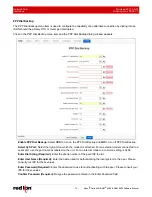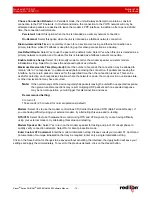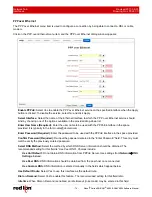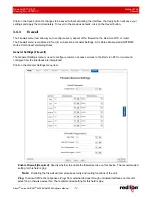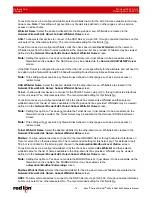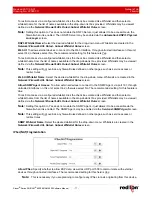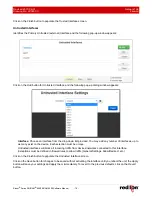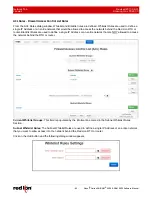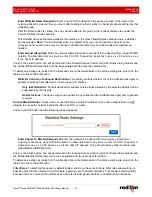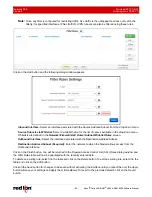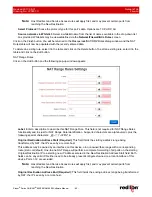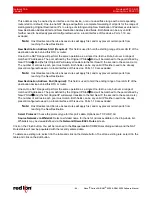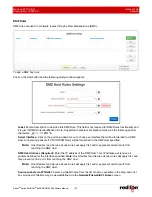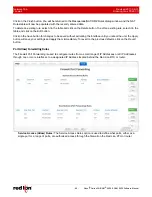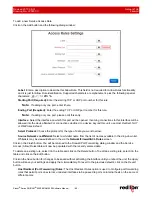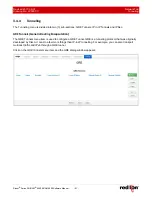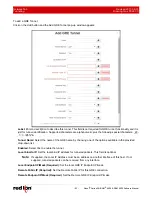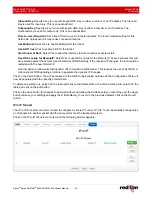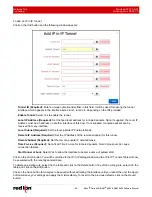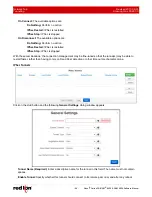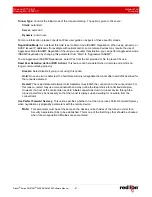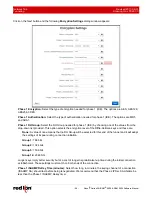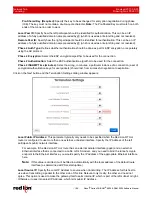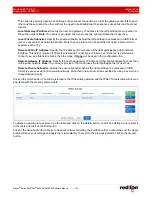
Network Tab
Revised 2017-08-31
Firewall
Drawing No. LP0997-C
- 86 -
Sixnet
®
Series SN/RAM
®
6000 & RAM 9000 Software Manual
This address may be owned by an interface on this device, or an unowned/fake range with a corresponding
route (static or default). One-to-one NAT Range will perform a complete forwarding of all ports for the range of
starting/ending Original Destination IP’s to a range of starting/ending New Destination IP addresses entered in
New Destination Address Start and New Destination Address End fields. Both fields can be any valid IP.
Neither need to be already present/configured/owned on a local interface of this device. Ports 1-19 are
excluded.
Note:
Host Redirect and Service Access rules will apply first, and may prevent certain ports from
reaching the New Destination.
New Destination Address Start (Required):
This field is used to hold the starting range of real LAN IP of the
destination device behind this RTU or router.
One-to-One NAT Range will perform the same operation as a single One-to-One Rule, but over a range of
matched IP Addresses. The pool defined by the Original IP Start
End, will be matched to the pool defined by
New IP Start
End (the first Original IP will always translate to the first New IP, the second to the second, etc.).
The number of entries in each pool must match. Both fields can be any valid IP. Neither need to be already
present/configured/owned on a local interface of this device. Ports 1-19 are excluded.
Note:
Host Redirect and Service Access rules will apply first, and may prevent certain ports from
reaching the New Destination.
New Destination Address End (Required):
This field is used to hold the ending range of real LAN IP of the
destination device behind this RTU or router.
One-to-One NAT Range will perform the same operation as a single One-to-One rule, but over a range of
matched IP Addresses. The pool defined by the Original IP Start
End, will be matched to the pool defined by
New IP Start
End (the first Original IP will always translate to the first New IP, the second to the second, etc.).
The number of entries in each pool must match. Both fields can be any valid IP. Neither need to be already
present/configured/owned on a local interface of this device. Ports 1-19 are excluded.
Note:
Host Redirect and Service Access rules will apply first, and may prevent certain ports from
reaching the New Destination.
Select Protocol:
Choose the protocol type for this port’s data. Options are TCP, UDP, All.
Source Network via Whitelist:
Select a whitelist name for the list of names available in the drop-down list.
Whitelists may be viewed/defined via the
Network/Firewall/ACL Rules
screen.
Click on the
Finish
button. You will be returned to the Masquerade/NAT/DMZ Rules dialog window and the NAT
Rules table will now be populated with the recently entered data.
To delete an existing rule, select it in the table and click on the
Delete
button. To edit an existing rule, select it in the
table and click on the
Edit
button.

